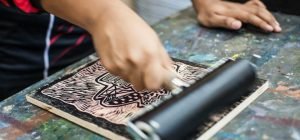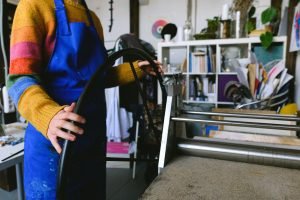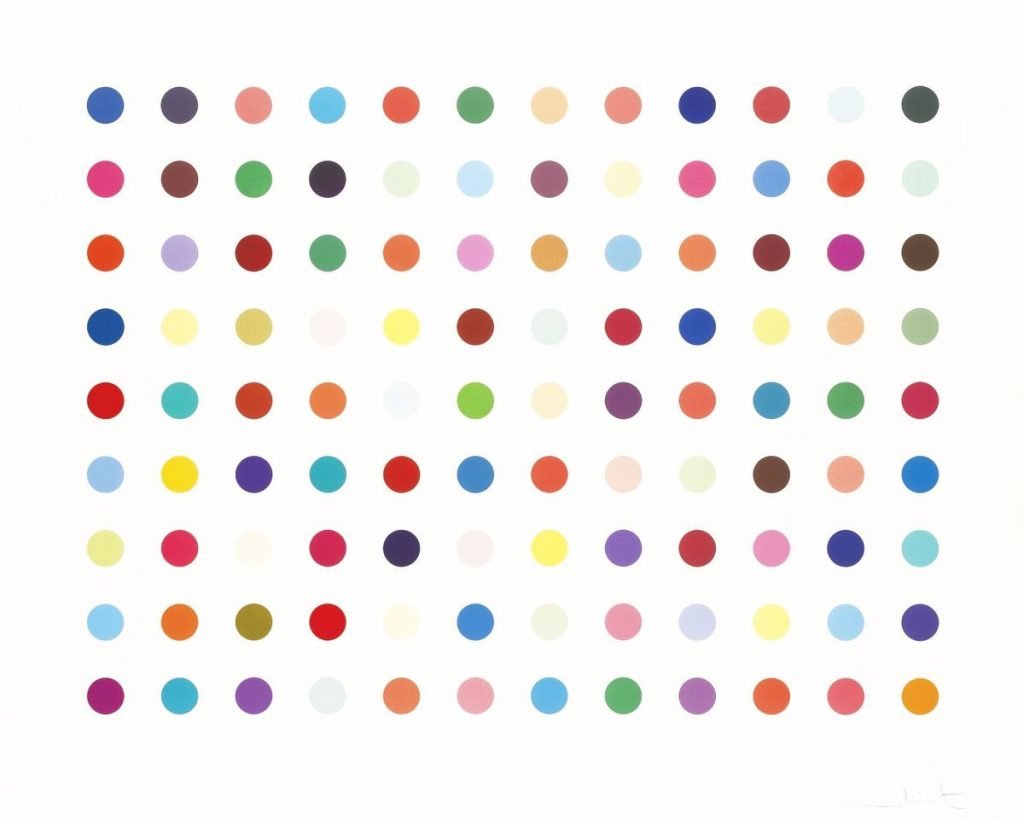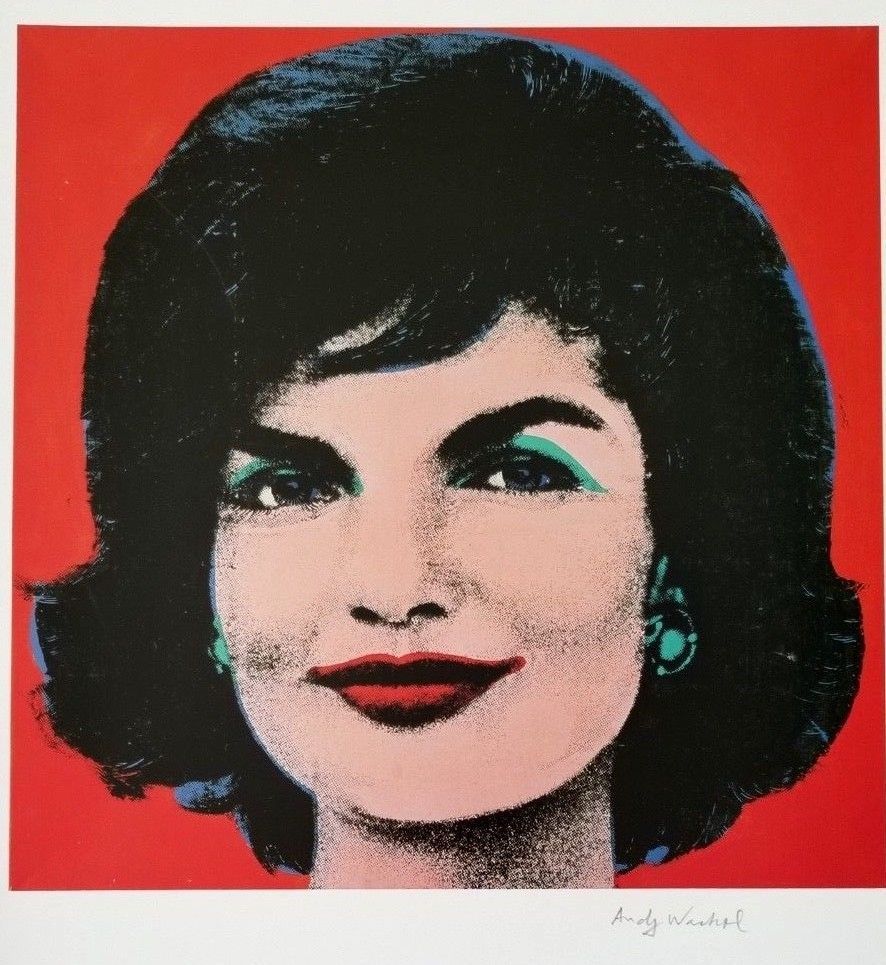Some might think of art collecting as the process of investing huge amounts of money on monumental oil works on canvas or rare, delicate watercolors. The savvy art collector knows, however, that a valuable component to many collectors’ portfolios is to be found in the medium of prints. Works in multiple are an increasingly popular category because they offer an ideal combination of expert artistry and often a more reasonable price point, which is particularly attractive for those just entering the art market or for those trying out new artists for their collections. In this article, we explore the realm of prints and multiples to illustrate why these works are such a vital facet of the art market.
The History of the Print
Don’t worry: we’re not going to slog through the full history of printmaking (though it does make for a fascinating tale). Short story: Printmaking has been around for centuries. From the earliest woodblock prints produced during the ninth-century Chinese Tang Dynasty to the advent of Johannes Gutenberg’s press in the mid-fifteenth century, artists have been using the medium of the print well before the advent of other media like oils or acrylics.
One of the biggest advantages of printmaking realised early on by artists was the incredible reach that the medium made possible. By making multiples, artists realized that printmaking meant their art could reach the collections of many at once and spread knowledge of their talents at an exponential rate. Not only were there more copies of one work to share across the market, but they were also more affordable for a new collecting demographic that might otherwise be priced out of collecting art all together.
Printmaking also increasingly became a means for artists over history to conjure remarkable works. One need look only to eighteenth-century English artist William Hogarth or nineteenth-century French artist Honoré Daumier, who elevated the art of printing into a mode of political commentary with their images that chastised government and critiqued social norms. Andy Warhol is another who transformed the art of printmaking into a striking statement on the very practice of art itself. Creating silkscreen print replicas of some of the day’s most iconic celebrities, from Marilyn Monroe to Jackie Kennedy, Warhol used printmaking to capture the essence of his era. Juxtaposing these more playful figural repetitions with visceral looks at the cultural turmoil of the day, in powerful prints like Birmingham Race Riot, Warhol showcased to the world the versatility of print media as a means of cultural commentary.
The Art of Printmaking
Adding to the stories and messages that artists have explored through printmaking is the incredible skill that goes into creating a print run, otherwise known as the number of prints made of one plate in a given edition (usually indicated near the printed image’s margin). Let’s look briefly at some of the technical finesse needed for some of the more popular modes of printmaking:
Woodblock Relief Printing
One of the oldest printmaking techniques, woodblock printing comprises carving an image on the surface of a block of wood. After the imprint or transfer of a drawing was applied to the block’s surface, the printmaker would then carve around contours to subtract away the negative space of the composition (hence the term “relief” prints can sometimes be used). Softer woods made this process of gauging the surface easier, but they also require more technical acuity to guarantee the accuracy of each gauge made. This is one reason why many woodblock prints showcase thicker, bolder lines. Wood blocks also break down more quickly due to the repeated pressure of printing, which means the number of runs/editions is typically diminished.


Engraved Intaglio Prints
More durable than woodblock prints, engravings are conjured on metal – typically copper – plates through gauging the surface of the plate. Instead of removing the negative space, though, these gauges become the wells in which the ink sits for printing. This is why this category is often referred to as “intaglio” prints. While the risk of slippage when carving is diminished when comparing woodcut reliefs to engraved intaglios, the skill needed is no less.
Engraving requires a strong, smooth stroke to gauge the surface of the plate. More complicated is the engraving technique of etching, which affords a print a sense of a textured surface and is accomplished by placing the plate in an acid bath. Timing is key: too brief a bath and the surface effects will not register; too long in this solution and one’s entire engraved design can be obliterated.
Screen Printing
The incredible popularity of prints across the fifteenth and sixteenth centuries spurred new techniques to both streamline advance the process of printmaking in the following generations. Aquatint and lithography, for example, arrived in the eighteenth century and introduced even more variety in the tones possible in printing. Then, in the nineteenth century, rotary presses were developed to afford artists and those in other industries the ability to print on an even larger scale with greater consistency.
The twentieth century, though, witnessed the rise of screen printing. A technique also originating in ancient China, screen printing experienced a massive international revival globally in the twentieth century. The process involves a screen with an image or contour superimposed upon it such that blocks areas of the surface. When ink is run across it, the ink can pass only through the unblocked portions of the screen. Similar attention needs to be paid to the uniform application of the ink to the surface as well as the overlay of multiple colors to result in a seamless composition.
Keep in mind that, with any of these methods, the work involved is extensive. Prints rarely come out perfectly on their first run through the press, so there is often an extended period of the artist reconsidering compositions, reworking plates, adjusting inking to result in an optimum image. Then, when that ideal work is achieved, the artist needs to ensure that they replicate all steps of the actual printing process – preparing the plate, inking the plate, aligning the paper, running the press – for every print in a given edition.
The Benefits of Collecting Prints
Whilst in the digital era, the Giclee print (using modern inkjet printers) has become a modern popular form of prints and editions, hopefully it has become clear that not all prints are the same and that they are not just a quick replication but rather the culmination of a painstaking labor of love, often with master printers and artists collaborating over the course of many months. Owning a print, then, is to be a part of that remarkable creative process.


Given this energy that prints hold, it might seem paradoxical to note that another benefit of adding prints to one’s art collection is that they tend to be relatively accessible in terms of price. It is true, however, that prints by noted artists often sell at lower prices than their paintings do. This is particularly the case when comparing works by blue-chip artists whose prints, which hold the same vivacity and ingenuity as their works on canvas do, are nevertheless attainable for a lower price point. Accordingly, prints can make a fantastic entry point into the art market for a collector who isn’t ready to commit to a major art investment.
Pick Up on the Power of Prints
Given all of these factors, what is not to love about the power of prints? Whether adding new work to an existing collection or making your first foray into collecting fine art, Galloire can help you navigate this market, with editions from leading modern and contemporary artists available via our online platform, but also with access through our team to many more investment grade works by artists from Hockney to Hirst and Basquiat to Banksy.

